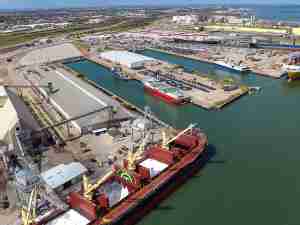Traffic at the Port of Barcelona grew 9% in the first quarter, with increases in all segments
posted by AJOT | Apr 24 2014 at 04:01 PM | Ports & Terminals
The Port closed the first quarter with 10.7 million tons of goods transported, representing a 9% increase in total traffic. This result was helped by growth in all types of cargo handled at Barcelona's port terminals.
Containerized cargo, which is a strategic segment, increased by 5%, with a total of 428,720 TEUs transported (1 TEU = 20ft container), mainly due to buoyant foreign trade. Full import container traffic, which had been showing significant losses since the start of the crisis, grew by 7% during the first three months of the year, with more than 100,000 TEUs unloaded at the Port.
Meanwhile, the 132,246 full export TEUs shipped to various destinations increased by 3% compared to the first quarter of 2013. The recipient countries with the most significant growth in this traffic were China (31%), USA (17%), Morocco (35%), Mexico (7%) and Saudi Arabia (11%).
The Port's specialized terminals transported 174,163 new vehicles up to March, an increase of 5%. There was a sharp rise in imports in this sector, which grew at a rate of 35%, with a total of 26,108 units unloaded. However, vehicles for export are in first place in absolute terms, with 103,167 cars shipped and a cumulative growth of 7.5%.
“It is important to emphasize that these increases occurred in all segments of cargo, consolidating the great diversity of the Port of Barcelona, which is one of its main assets,”said Port President Sixte Cambra. “Furthermore, these good results demonstrate the growing internationalisation of the economy of Catalonia and the rest of our hinterland, which extends throughout the Iberian Peninsula and southern France,” he added.
The momentum of bulk goods
The highest percentage growth in the first quarter was seen in bulk goods transport. The Port handled nearly 3 million tons of liquid bulk, an increase of 24% year on year. Three types of hydrocarbons grew most: diesel (+53%), fuel oil (+37%) and gasoline (+5%). Biofuels also performed very well (+92%), with a total of 402,667 tons handled. In addition, chemical bulks increased by 60% to 275,810 tons. Transport of this commodity is linked to a reactivation of production capacity.










